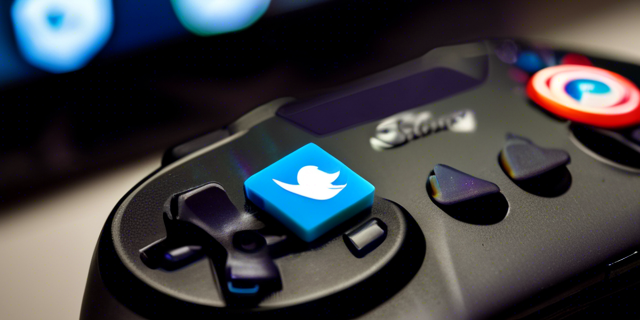The gaming world is more than just pixels and play; it's a vibrant, living community where its success hinges on more than just a great game.
Social media isn't just a tool—it's a lifeline for game developers and creators to engage with their audience, cultivate a dedicated fan base, and skyrocket their game's visibility. This blog dives deep into actionable strategies and insider tips for you to conquer your social media presence within the gaming community. From mastering gaming community management and crafting a winning social media marketing plan to developing compelling gaming content and harnessing the power of gaming influencers, we've got you covered.
Get ready to level up your social media game!
Understanding the Gaming Community
Before diving into specific strategies, it’s crucial to understand the gaming community. Gamers are a diverse group with varying interests, from casual mobile gamers to hardcore console and PC enthusiasts. They are passionate, vocal, and value authenticity. To connect with them effectively, you must tailor your approach to resonate with their interests and preferences.

Gaming Community Management
1. Building a Strong Online Presence
Effective gaming community management starts with a strong online presence. Establish profiles on major platforms such as Facebook, Twitter, Instagram, and TikTok, as well as gaming-specific platforms like Discord and Twitch. Ensure your branding is consistent across all channels, with a recognisable logo, color scheme, and tone of voice. Consistency helps in building brand recognition and trust among your audience.
2. Engaging with Your Audience
Active engagement is a cornerstone of gaming community management. Respond to comments, participate in discussions, and show appreciation for user-generated content. Use polls, Q&A sessions, and live streams to interact with your audience in real-time. This not only humanises your brand but also fosters a sense of community and belonging. Engaged audiences are more likely to become loyal fans and advocates for your game.
3. Moderation and Community Guidelines
Effective gaming community management involves maintaining a positive and inclusive environment. Establish clear community guidelines and enforce them consistently. Appoint moderators to monitor interactions and address any issues promptly. A well-managed community is more likely to thrive and attract new members. Clear guidelines ensure everyone knows the expected behavior, reducing conflicts and maintaining a welcoming atmosphere.
Social Media Marketing for Games
1. Creating a Comprehensive Strategy
A well-defined social media marketing strategy is essential for success in gaming community management. Start by identifying your goals, such as increasing brand awareness, driving game downloads, or boosting player engagement. Then, outline your target audience, key messages, and the platforms you’ll use. This roadmap will guide your efforts and ensure you stay focused on your objectives.
2. Content Planning and Scheduling
Consistency is crucial in social media marketing for games. Develop a content calendar to plan and schedule your posts in advance. Mix different types of content, such as gameplay videos, behind-the-scenes looks, developer interviews, and user-generated content. Use tools like Hootsuite or Buffer to streamline the scheduling process and ensure a steady flow of content. Regular posting keeps your audience engaged and your brand top-of-mind.
3. Leveraging Paid Advertising
Organic reach on social media can be limited, especially with its continuously-changing algorithms. Invest in paid advertising to amplify your reach. Platforms like Facebook and Instagram offer robust ad targeting options, allowing you to reach specific demographics based on interests, behaviors, and location. Use eye-catching visuals and compelling ad copy to capture attention and drive conversions. Paid ads can significantly boost visibility and attract new players.

Gaming Content Strategy
1. Crafting Engaging Content
Content is meta in social media marketing and gaming community management. Focus on creating high-quality, engaging, maybe meme-y content that resonates with your audience. Showcase your game’s unique features, share tips and tricks, and highlight player achievements. Use a mix of formats, including images, videos, GIFs, and infographics, to keep your content fresh and appealing. Engaging content keeps your audience interested and encourages shares, broadening your reach.
2. Utilising User-Generated Content
User-generated content (UGC) is a powerful tool for building credibility and trust within gaming community management. Encourage your community to share their gameplay experiences, fan art, and reviews. Feature UGC on your social media channels to showcase the passion and creativity of your players. This not only provides authentic content but also strengthens the bond between your brand and your community. Highlighting UGC shows you value your players and their contributions.
3. Storytelling and Narrative
Storytelling is a compelling way to engage your audience and is a crucial aspect of gaming community management. Share the story behind your game’s development, the inspiration for its characters and settings, and the journey of your team. Personal stories create an emotional connection and make your brand more relatable. Use episodic content, like developer diaries or character backstories, to keep your audience hooked.
A strong narrative can turn casual players into dedicated fans.
Leveraging Gaming Influencers
1. Identifying the Right Influencers
Gaming influencers have a huge impact on the community. Collaborating with influencers can help you reach a broader audience and build credibility, which is essential for effective gaming community management. Identify influencers who align with your brand values and have a genuine connection with their followers. Use tools like Social Blade or HypeAuditor to analyse their reach and engagement metrics. Choosing the right influencers ensures your message reaches the right audience.
2. Building Authentic Partnerships
Authenticity is crucial in influencer marketing and gaming community management. Work with influencers to create authentic, engaging content that showcases your game in a genuine light. Avoid overly scripted or forced promotions, as gamers are quick to spot inauthenticity. Instead, focus on building long-term relationships that benefit both parties. Authentic partnerships result in more effective promotions and stronger endorsements.
3. Measuring Impact and ROI
Track the performance of your influencer campaigns to measure their impact on gaming community management. Use metrics like engagement rates, reach, and conversion rates to evaluate success. Collect feedback from both the influencers and their followers to gain insights into what worked and what didn’t. Use this data to refine your future influencer marketing strategies. Measuring ROI helps you understand the effectiveness of your campaigns and optimise future efforts.

Analysing and Adapting
1. Monitoring Performance
Regularly monitor your social media performance using analytics tools like Google Analytics, Facebook Insights, and Twitter Analytics. Track key metrics such as engagement, reach, and conversion rates to understand how your content is performing in the context of gaming community management. Use this data to identify trends and adjust your strategy accordingly. Continuous monitoring ensures you stay on track and make data-driven decisions.
2. Adapting to Trends
The gaming industry is constantly evolving, with new trends emerging almost daily. Stay updated with the latest trends and adapt your strategy to stay relevant. Whether it’s a new social media platform, a viral challenge, or a popular meme, being agile and responsive will help you maintain your audience’s interest. Adapting to trends shows your brand is current and engaged with the community.
3. Continuous Improvement
Social media marketing and gaming community management are ongoing processes. Continuously seek feedback from your community and learn from your experiences. Experiment with new content formats, campaign ideas, and engagement tactics. The more you refine and improve your strategy, the more successful your social media presence will be. Continuous improvement ensures your approach stays effective and evolves with changing circumstances.
Conclusion
Maximising your social media presence in the gaming community requires a strategic and multifaceted approach. By focusing on gaming community management, social media marketing for games, gaming content strategy, and leveraging gaming influencers, you can build a strong and engaged community around your game. Remember, authenticity, engagement, and adaptability are key to success. Stay connected with your audience, provide valuable content, and continuously refine your strategy to achieve long-term growth and success in the competitive gaming industry.
At The Game Marketer, we understand the unique challenges and opportunities that come with promoting games in today's digital landscape. Our team of marketing experts specialises in gaming community management, social media marketing for games, and crafting tailored gaming content strategies that resonate with players. Whether you're a small indie developer or an established studio, our comprehensive services are designed to elevate your game's presence and engage your audience effectively. Let us help you build a vibrant community around your game, connect with influencers, and maximise your social media impact. Together, we can turn your gaming vision into a success story that captivates players worldwide!



